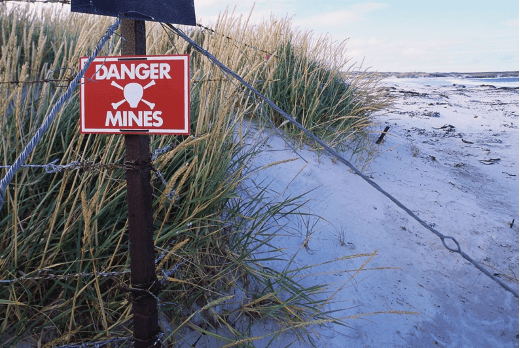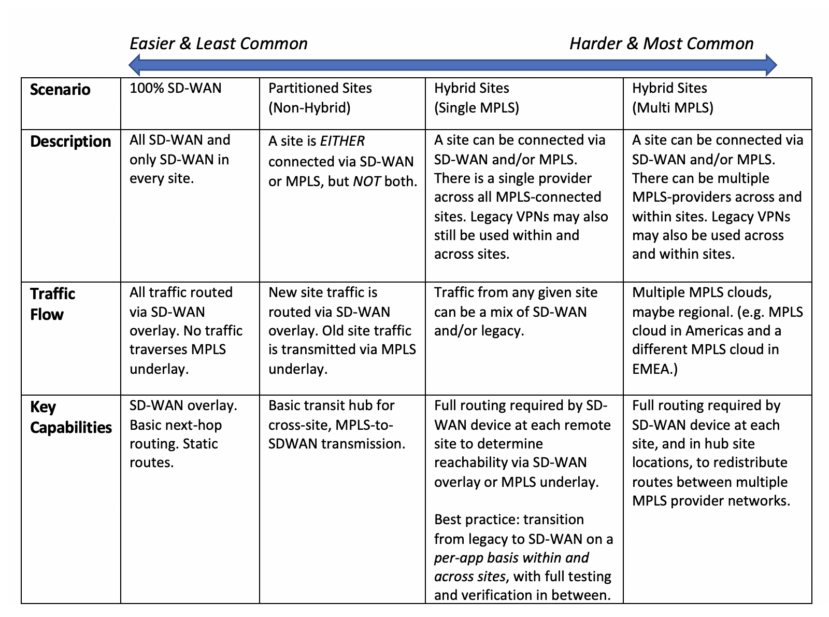Enterprise SD-WAN Trade-Offs Part 2: the Destination vs. the Journey
Preface: COVID-19 delays SD-WAN deployments in 2020
In between the first draft of this Enterprise SD-WAN Trade-Offs blog series and the present, the COVID-19 pandemic emerged, and with it a new crop of IT requirements and a shift in priorities to support work-from-home employees. In turn, many SD-WAN adoption projects have been put on hold, and analysts have forecasted that SD-WAN spending will be flat YoY in 20201. However, the same analysts have predicted a rebound of 40% YoY growth in 2021, as enterprises reimagine and reintroduce use of on-premises locations.
The pause-button we have experienced with SD-WAN is a perfect example of a common case for SD-WAN adoption. Namely, that SD-WAN adoption never happens all at once, which is the focus of this blog. Keep this in mind as you reanimate those SD-WAN projects that may have been temporarily put on hold. Now back to our regularly scheduled blog entry…
The journey toward successful SD-WAN adoption
We all want SD-WAN. But it’s impossible to transform the old into the new all at once. This means we have to traverse an intermediate phase—the brownfield—where some sites/circuits are managed via SD-WAN and others remain managed via conventional routers.
 The difference between navigating this phase unscathed and bringing your network to a screeching halt has everything to do with the ability of your SD-WAN solution to effectively interface with your existing network and cope with its topological complexities, one-off hacks and special-case router configs that have built up over time. Those hidden network demons that have been lurking unnoticed will inevitably (thanks, Murphy!) rear their ugly heads once the transformation is underway.
The difference between navigating this phase unscathed and bringing your network to a screeching halt has everything to do with the ability of your SD-WAN solution to effectively interface with your existing network and cope with its topological complexities, one-off hacks and special-case router configs that have built up over time. Those hidden network demons that have been lurking unnoticed will inevitably (thanks, Murphy!) rear their ugly heads once the transformation is underway.
This blog takes a close look at multiple phases you’ll likely encounter during SD-WAN deployment and what capabilities you’ll need in place.
The high-level and intuitive takeaway here is this: if you want to ease the migration from a legacy network to SD-WAN, it’s critical that your SD-WAN solution be as fluent in legacy routing technology (on the underlay) as it is with its own SD-WAN (in the overlay). During the transition, you’re going to have one foot in the old world and one foot in the new world. You need an SD-WAN solution that is fluent in both. From the old world, this includes capabilities such as the following:
- Full routing stack
- IPv6 support (overlay & underlay)
- VRF segmentation
- Multicast support (overlay & underlay)
- Flexible topologies (full mesh, hub and spoke, spoke-hub-hub-spoke, hub-spoke-spoke-hub)
Here’s a closer look…
Transitionary (brownfield) phases and critical capabilities you’ll need
As you consider the phases in the table below, it’s notable that the hardest cases (on the right) are actually more common. They exist and persist as you phase in the adoption of SD-WAN at remote sites. Conversely, the easier cases (on the left) are the ones that are least common—only found at the tail end of a complete transition to SD-WAN.

In closing: is SD-WAN adoption more trouble than it’s worth?
The answer to this question is simple (and hopefully now rather obvious).
- If your SD-WAN solution provides the capabilities needed to successfully get you from point A to point B, then YES. Go forth planning SD-WAN adoption with the confidence that your new network and your old network can co-exist seamlessly every step of the way.
- However, if your SD-WAN solution doesn’t provide these critical capabilities, then BEWARE. The cost, risk and effort associated with navigating the inevitable minefield of the brownfield could decimate the benefits you were seeking from SD-WAN in the first place.
1Gartner: Forecast Analysis: Enterprise Network Equipment, Worldwide (24 July 2020)

Leave a Reply